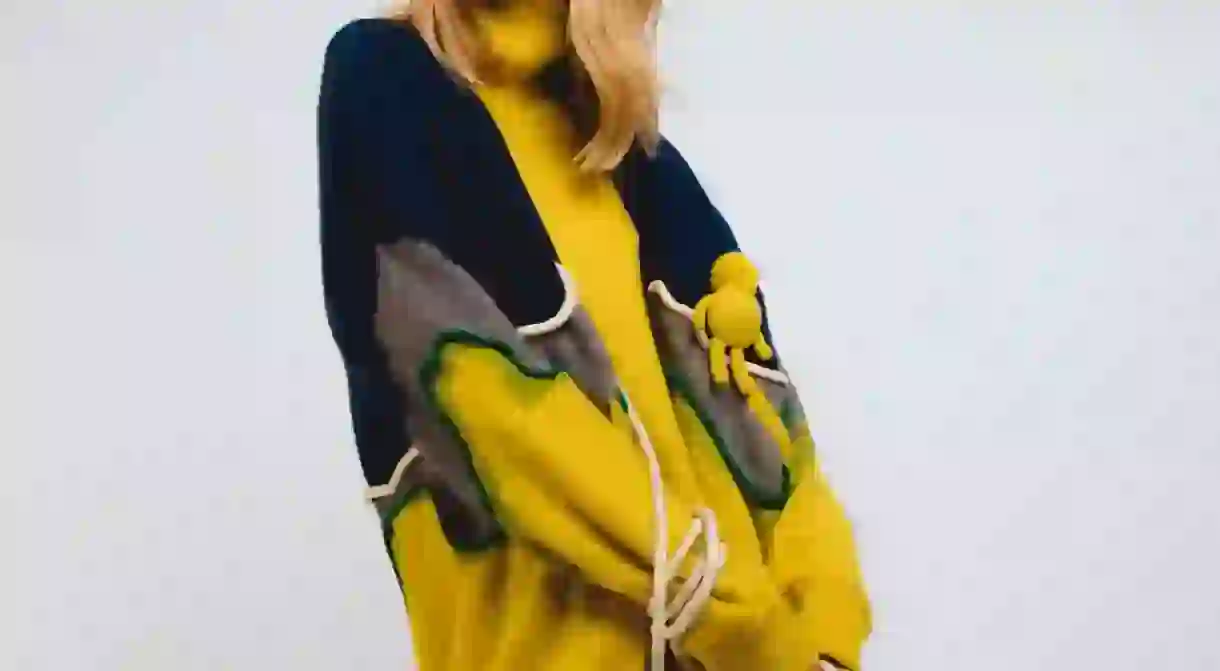Mongolia Is the Most Exciting Country for Fashion, and Here's Why

Mongolia might not be the first place you think of for fashion, but the rich, fertile land provides perfect grazing potential for the region’s goats, who happen to produce some of the finest cashmere around. No one knows this more than Mandkhai Jargalsaikhan, a Mongolian-born fashion designer who is combining the country’s bountiful countryside with her family’s rich heritage in craftsmanship to re-imagine cashmere for the millennial generation.
The mission is straightforward: MANDKHAI aims to offer new and exciting designs in cashmere, bringing a creative aesthetic to a material that has standardly been used to create über comfortable – and über boring – jumpers. This Mongolian brand is different, offering lightweight dresses, trousers and suit jackets (and jumpers, of course) in bright, punchy colours and with idiosyncratic detail. Now in their third season, the brand brings a ‘Goat to Garment’ production chain to a global audience. As part of our Behind The Seams series, we caught up with founder of the brand, Mandkhai Jargalsaikhan to talk Mongolian style, sustainable fashion and travel tips.
Culture Trip: Your family were the first to start a business in post-communist Mongolia. What was it like growing up there?
Mandkhai Jargalsaikhan: My parents were working most of the time, so when I was little I actually spent a lot of time at the factory playing, and learning simple knitting techniques. In a way, the factory was my playground. Moreover we often got foreigners visiting, including actors and celebrities like Richard Gere and Julia Roberts. Of course I did not know who they were at the time, so I would be wondering why everyone was sending me to get their autographs. Thinking back there was never a dull moment at the factory.
CT: Why did your family choose to start with cashmere?
MJ: My parents already had experience working in the cashmere industry and then when the fall came they decided to start their own manufacturing business in Mongolia.

CT: How do you see your brand changing perceptions of cashmere?
MJ: I hope to change the general perception that cashmere is all about basic pieces that older people wear. Through MANDKHAI people will realise that cashmere pieces can be contemporary, interesting and of great quality. I also hope to educate people about Mongolian cashmere and the incredible qualities this natural fibre has to offer so that people make more informed choices.

CT: What was it that made you want to take this very local story and create a global brand? And why was it important to tell the story using this ‘Goat to Garment’ narrative?
MJ: After studying fashion design with marketing in London, I realised that there were no interestingly designed cashmere pieces. Everything I saw was rather boring. Coming from Mongolia and also from a manufacturing background I knew that I could offer something more exciting. I wanted to share my story and the benefits of this precious natural fibre with the world. The ‘Goat to Garment’ narrative is important to me because I want to be transparent and offer a genuine product – a piece of Mongolia.

CT: What have been the biggest challenges of launching an international label?
MJ: The biggest challenge so far has been balancing running a business and still making enough time to be creative and experimental.
CT: The production is hyper-local – what are your major design influences and inspirations?
MJ: Even though my production is in Mongolia, I mostly design my pieces in London or while I’m travelling. I like the abundance of art exhibitions in London. There is always something new to see and discover. I also enjoy going on road trips in Mongolia, as nature gives me the freedom and inspiration to work on my colours.

CT: I realise I’m asking you to make a sweeping generalisation, but what is the current fashion scene like in Mongolia more generally? Are people experimental in their style?
MJ: I am happy to see that fashion is definitely developing in Mongolia. There are now quite a few designers showing their collections seasonally. Also we are starting to see more and more concept boutiques opening up. With that I think people are exploring more, and paying more attention to how they dress.

CT: What should people travelling to Mongolia for the first time look to visit and experience?
MJ: The best time to visit Mongolia is in July, that’s when our Naadam festival takes place. During Naadam you can see wrestling, archery and horse riding, but also make sure you people-watch, because Mongolians will wear their traditional attire. In addition to that, every trip to Mongolia should include a road trip – that’s when you will actually see nomadic lifestyles and the free-roaming animals, like goats, sheep and horses.




















